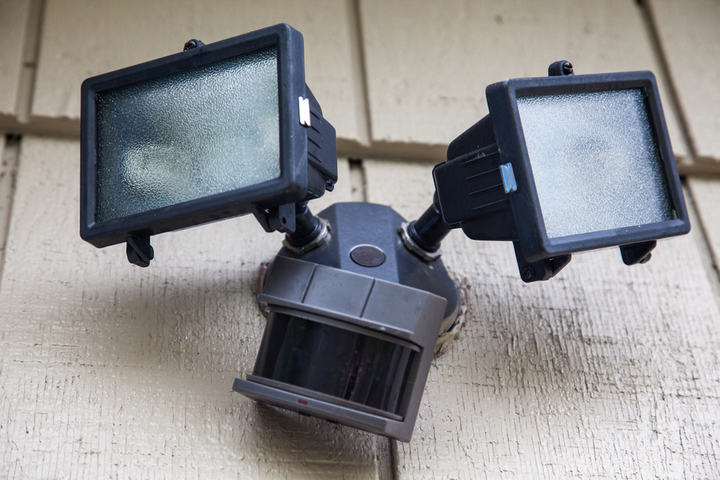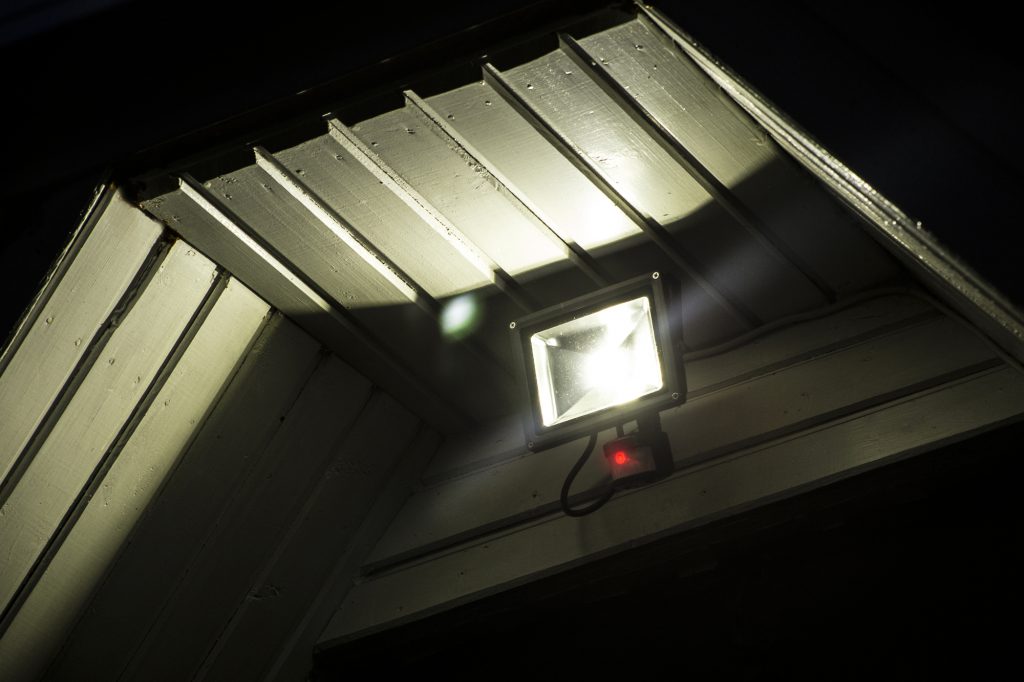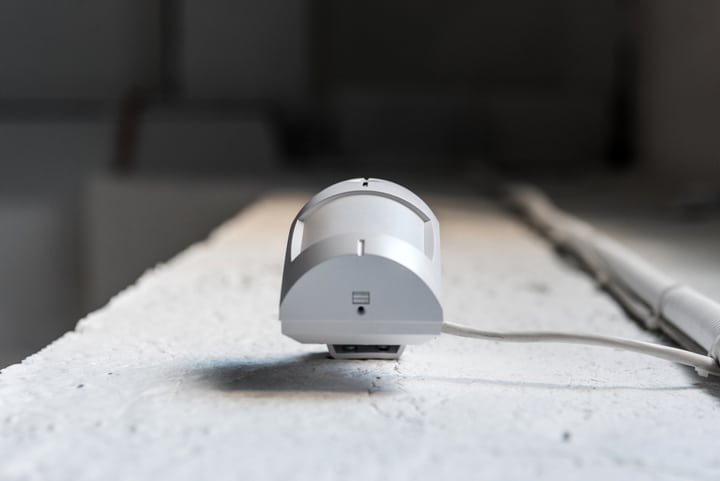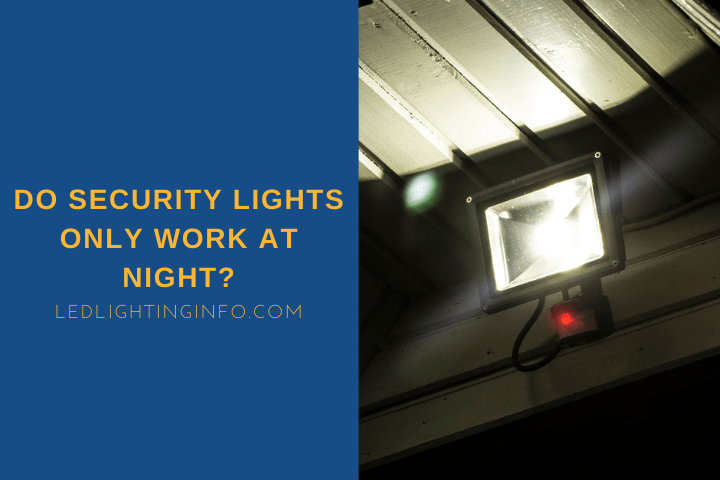If you’re worried about the safety of your home, then security lights are worth considering. They can light up to highlight any hazards while you’re walking around your house in the dark, and they can deter intruders who would have otherwise broken in.
However, you don’t want a security light that is constantly switching on even when it’s not needed, especially if you spend a lot of time on your porch or in your garden.
They’re not usually needed during daylight hours, so why waste the electricity if security lights work throughout the whole day?
Some security lights will only work at night, including those with a dusk to dawn sensor or a timer that you program yourself. Basic models have a simple motion sensor that will switch the light on at all hours.
In this article I’m going to look at:
- The different types of security light you can buy
- Which security lights only work at night
- Whether you can adjust the sensors on your security light
Types Of Security Lights

Most security lights have some form of sensor to dictate when they switch on. You can choose to have your security lights on at all times, but this wouldn’t normally be necessary and would waste money.
Motion Sensor Security Lights
The more basic security lights have a simple motion sensor.
These work by using passive infrared to detect any movement, which then triggers the light.
So, whether you’re stepping into your backyard to throw out the trash and you want illumination to help you avoid tripping on a paving slab, or you want to frighten away a potential burglar, these lights are a solid addition to your home.
Related: Can LED Bulbs Work With Motion Sensors?
Security Lights With a Built-in Timer
Some of these models will be a little more advanced with a timer. You can set the timer so that the light only switches on between certain hours.
The only drawback with a timer is that it’s manual, and you need to remember to adjust it to deal with the changing hours of daylight.
If you set it in the summer and don’t amend it, you’ll have hours at a time during the evening and early morning where the lights just won’t switch on.
Dusk To Dawn Security Lights
There are security lights that get around the problem of needing manual controls, as they have a light sensor that’s often referred to as a dusk to dawn sensor.
This measures the ambient light so that, when dusk hits, it knows that it’s time to start operating the security light.
Once dawn has broken, and the area is well-lit already, the security light is left off.
The sensor type here is a photocell. This is a type of resistor which changes resistance depending on the photons of light hitting it.
What Type Of Security Lights Only Work At Night?

Of these three types of security light, only those with a timer or dusk until dawn light sensor will only work at night.
A basic motion sensor security light will switch on at all times of the day, even at midday when the sunlight is really bright.
You might not even notice that it’s switching on – if the sunlight is particularly bright, the security light could be switching on all the time. You’d only know if you watched the bulb since it wouldn’t have an impact on the ambient lighting otherwise.
With a security light that’s equipped with a timer, you’re in complete control. You can set the hours that you want it to operate.
They’re still usually equipped with a motion sensor, so that they’ll only switch on during the chosen hours AND when there’s movement, but depending on the placement of the light, its brightness. What you need it for, you could set it to always-on.
You can decide with the timer whether you want the light to only work when you’re likely to be asleep if your driveway and outdoor area is otherwise generally well-lit and unlikely to cause you an issue walking around your home.
Or you might want to set it to switch on earlier, lighting up your path when you’re late home from work or taking out the garbage.
Security lights with a dusk to dawn sensor, meanwhile, will only work at night. Their photocell technology detects when the sunlight has dimmed and switches on the light.
Some lights are always-on during lower light, while others include the PIR motion sensor. So, you only have the light switching on when it’s dark and when motion is detected.
Also read: Can Wind Set Off Security Lights?
Can You Adjust The Time On Dusk To Dawn Sensors?

Some dusk to dawn lights are pretty basic and will have a default lighting sensor reading that they work from.
But there are other options where you can adjust the sensor, often using a smartphone app.
You might want to save money by only having the light switch on when it’s extremely dark.
Or you might want to be more careful and have the sensor activate the light as soon as the sun starts to dim in the sky (or if it’s a particularly dark and overcast day).
This isn’t a standard feature, and it’s one you’ll need to seek out. If you can’t find a security light with a built-in adjustable photocell, consider adding your own.
You can find them online quite easily, but check they’re compatible with your security light.
You’ll then just need to install it next to the light, connect the wires, and you should have no trouble adjusting the brightness sensors.
Suppose you buy a security light with a photocell dusk to dawn sensor that isn’t adjustable, and you aren’t happy with how it’s working. In that case, most let you switch to an automatic mode or disable the photocell so that the light only works based on the motion sensor.
It might not be ideal, and you may wish to replace the light, but as a short-term measure, it can be better than a security light that doesn’t turn on if the ambient light is deemed high enough.
Final Words
While a security light can be a good way of keeping you and your home safe, you don’t want to waste electricity by having it switching on all the time, especially during the sunlight hours where it’s completely ineffective anyway.
Security light with a dusk to dawn sensor that’s adjustable will be the best option, but these can be expensive.
A simple timer option might be a good middle ground if you want to set the hours yourself – provided you remember to update them as the days get longer or shorter.
Which option have you gone with for your security lights? And do you have problems with the switching on when unnecessary, or even not turning on when you want them to?
Let me know in the comments.

